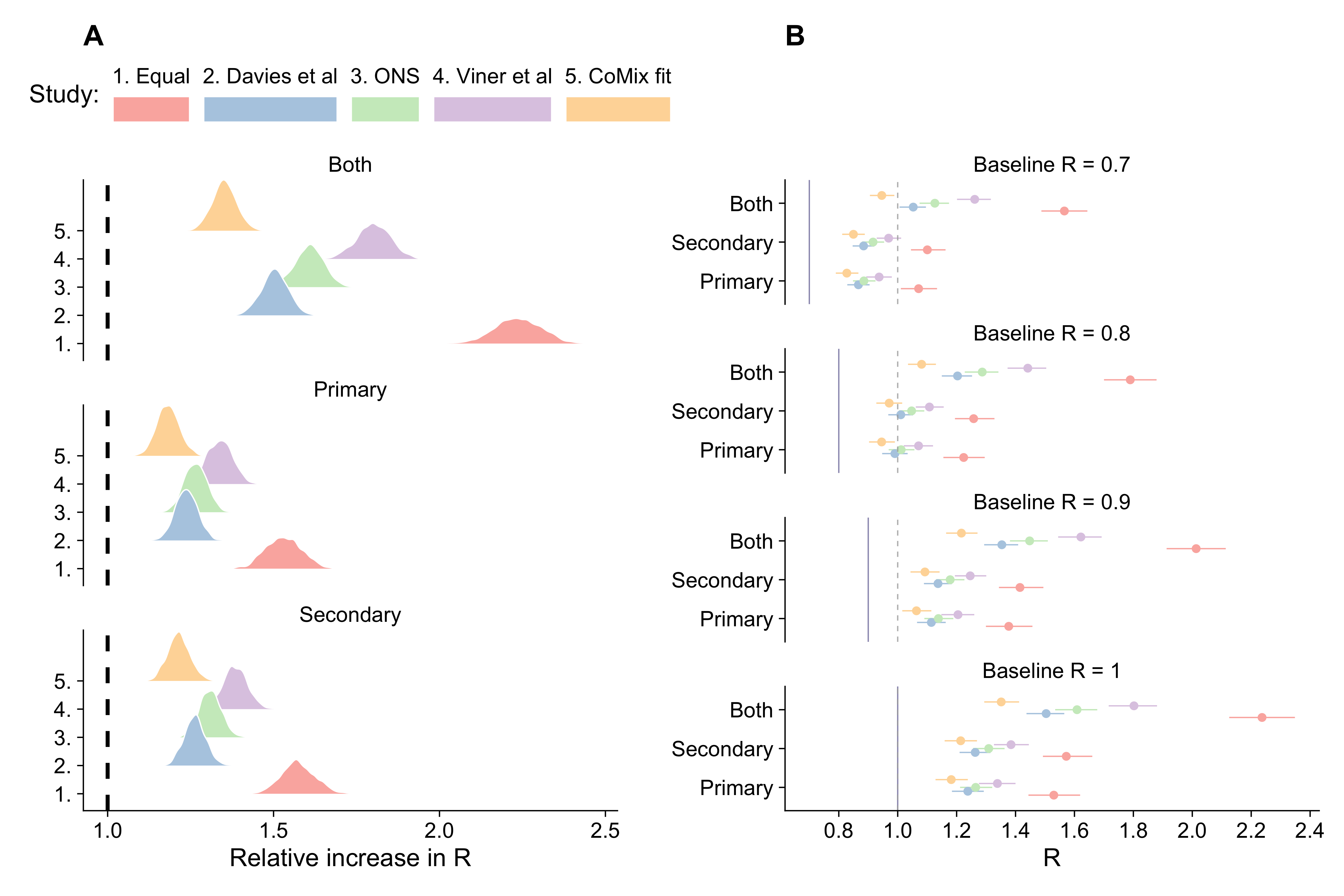Estimating the impact of reopening schools on the reproduction number of SARS-CoV-2 in England, using weekly contact survey data
This study has not yet been peer reviewed.
Summary
We measured social contacts when schools were either open or closed, amongst other restrictions. We combined these data with estimates of the susceptibility and infectiousness of children compared with adults to estimate the impact of reopening schools on the reproduction number. Our results suggest that reopening all schools could increase R from an assumed baseline of 0.8 to between 1.0 and 1.5, or to between 0.9 and 1.2 reopening primary or secondary schools alone.

Figure: The impact of reopening schools on the reproduction number. A) the relative increase in R (the ratio of dominant eigenvalues between contact matrices for each reopening scenario and that for current contact patterns) under different estimates of the age profile of susceptibility and infectiousness. B) The estimated R after reopening schools (points, 90% CI bars) from baseline R of 0.7, 0.8, 0.9 and 1.0 (vertical line). Dashed vertical lines show R = 1.0.